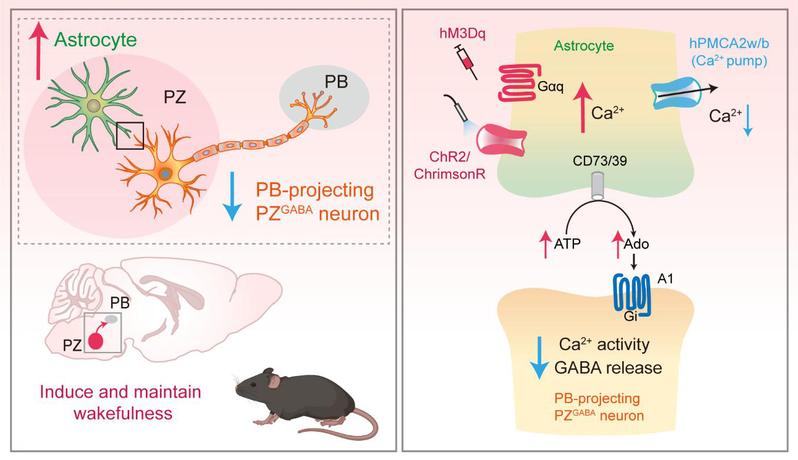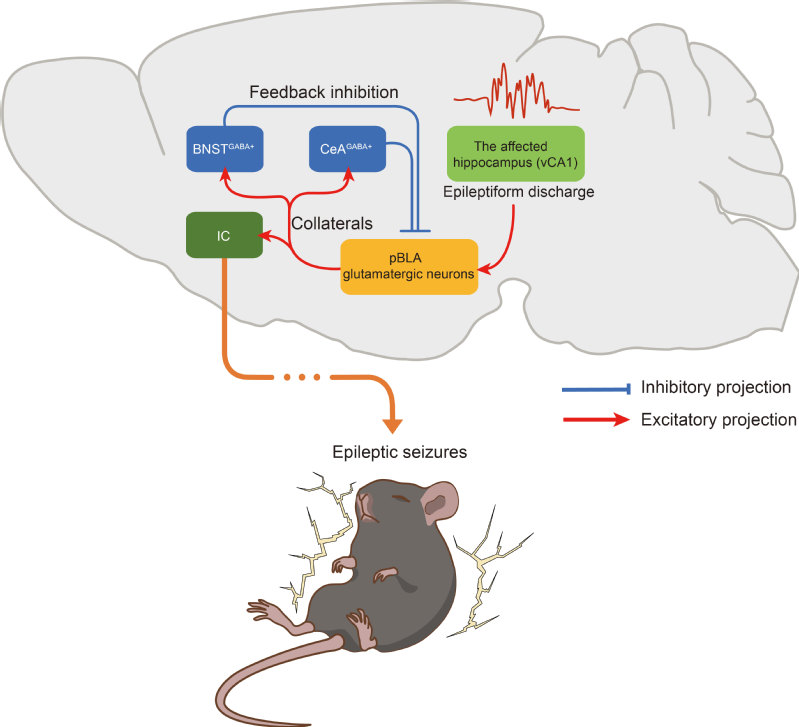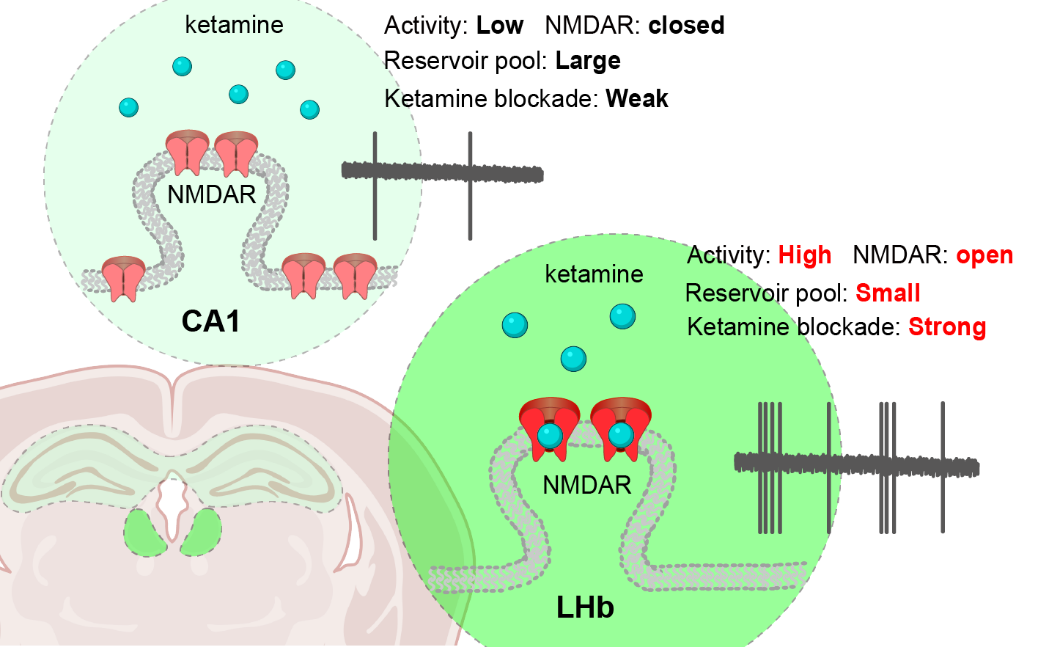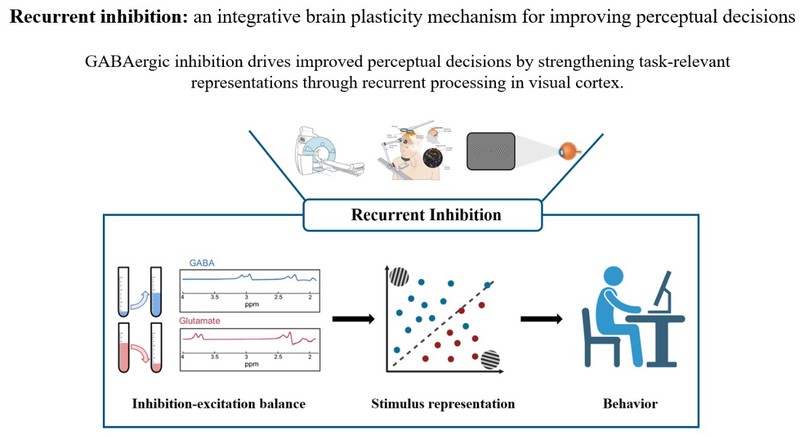-

HU Hailan’s group published in Neuron on the sexually dimorphic winner effect in mice
2025-10-27
The research team led by Prof. Hailan Hu has recently published an article titled Neural mechanism of the sexually dimorphic winner effect in mice on Neuron online on Oct. 15, 2025. This research revealeddmPFC PV-INs as a target for enhancing the winner effect, establishing a circuit-level framework for sex differences in competitive behaviors.The ‘‘winner effect,’’ wh...The research team led by Prof.Hailan Huhas recently published an article titledNeural mechanism of the sexually dimorphic winner effect in miceon Neuron online on Oct. 15, 2025.This research revealeddmPFC PV-INs as a target for enhancing the winner effect, establishing a circuit-level framework for sex differences in competitive behaviors.The ‘‘winner effect,’’ where prior victories increase the likelihood of future wins, profoundly shapes social hierarchy dynamics and competitive motivation. Al
-

GONG Zhefeng's group Publishes in Physical Review Letters on Muscle Mechanics of Drosophila Larva Rolling Motion
2025-06-16
The research team led by Prof. Zhefeng Gong has recently published an article titled "Mechanics of Soft-Body Rolling Motion Without External Torque" in Physical Review Letters on May 16th, 2025. This study reveals the muscle-driven mechanism behind the torque-free rolling motion of Drosophila larvae and validates the findings through a bio-inspired soft robot. Musc...The research team led by Prof. Zhefeng Gong has recently published an article titled Mechanics of Soft-Body Rolling Motion Without External Torque in Physical Review Letters on May 16th, 2025. This study reveals the muscle-driven mechanism behind the torque-free rolling motion of Drosophilalarvae and validates the findings through a bio-inspired soft robot. Muscle activation sequence enables self-driven rolling without external torque. While rolling motion is challenging for most animals (e.g.,
-

YANG Hongbin's group published in Nature Communications on negative valence coding by noise
2025-05-19
The research team led by Dr. Hongbin Yang has recently published an article titled “A midbrain circuit mechanism for noise-induced negative valence coding” on May 17, 2025. This study revealed how noise affects emotional behaviors through a non-classical auditory pathway.Unpleasant sounds can elicit a range of negative emotional reactions and even pain. The neural pathways that transform auditor...The research team led by Dr. Hongbin Yang has recently published an article titled “A midbrain circuit mechanism for noise-induced negative valence coding” on May 17, 2025. This study revealed how noise affects emotional behaviors through a non-classical auditory pathway.Unpleasant sounds can elicit a range of negative emotional reactions and even pain. The neural pathways that transform auditory stimuli into salient actions have been extensively studied, the neural mechanisms that convert sound
-

HU Hailan's group published in Cell on Neuron-astrocyte Coupling
2025-04-25
The research team led by Professor Hailan Hu has recently published a groundbreaking article titled Neuron-astrocyte Coupling in Lateral Habenula Mediates Depressive-like Behaviors in Cell on April 24th, 2025. This study reveals how brain cells dynamically cooperate to drive stress response and depression.Stress-induced depression-like behaviors are driven by a dynamic recurrent network ...The research team led by Professor Hailan Huhas recently published a groundbreaking article titled Neuron-astrocyte Coupling in Lateral Habenula Mediates Depressive-like Behaviorsin Cell on April 24th, 2025. This study reveals how brain cells dynamically cooperate to drive stress response and depression.Stress-induced depression-like behaviors are driven by a dynamic recurrent network involving neurons and astrocytes in the lateral habenula and norepinephrine release from neurons in the locus co
-

CHEN Jiadong and LI Xiaoming' group published in Nature Communications that reveals the molecular markers and functions of novel GABAergic neuron subtypes in zona incerta.
2025-04-01
The molecular, morphological and anatomical features of neurons imply distinct neuronal subtypes, axonal projection pattern, and behavioral functions in the central nervous system. Since Ramon y Cajal first illustrated nerve cell morphology using Golgi staining and established the "Neuron Doctrine" over a century ago, the diverse morphological characteristics and functions of neuron subt...The molecular, morphological and anatomical features of neurons imply distinct neuronal subtypes, axonal projection pattern, and behavioral functions in the central nervous system. Since Ramon y Cajal first illustrated nerve cell morphology using Golgi staining and established the Neuron Doctrine over a century ago, the diverse morphological characteristics and functions of neuron subtypes have become increasingly evident. Recent advances in single-cell transcriptomics have further enabled the i
-

CHEN Jiadong' group published in Journal of Clinical Investigation on molecular markers of neuronal senescence in human drug-resistant epilepsy
2025-03-10
Epilepsy is a chronic neurological disorder caused by abnormal discharges of neurons in the brain and is often accompanied by symptoms such as cognitive impairment, anxiety, depression, and autism, severely affecting patients' quality of life. Globally, approximately 70 million people suffer from epilepsy, with an incidence rate of about 6.4 per 1,000 people. Among them, around 30% do not resp...Epilepsy is a chronic neurological disorder caused by abnormal discharges of neurons in the brain and is often accompanied by symptoms such as cognitive impairment, anxiety, depression, and autism, severely affecting patients quality of life. Globally, approximately 70 million people suffer from epilepsy, with an incidence rate of about 6.4 per 1,000 people. Among them, around 30% do not respond to existing antiepileptic drugs and are classified as drug-resistant epilepsy, though its exact patho
-

KANG Lijun's group published in Nature Communications on mechanosensation
2025-02-27
Mechanotransduction plays a critical role in various physiological processes, including hearing, touch, proprioception, pain, and blood pressure regulation. Mechanogated ion channels function as mechanoreceptors, converting mechanical forces into electrical signals to transduce force information. To date, all known mechanotransduction channels in the animal kingdom are either cation channels or ch...Mechanotransduction plays a critical role in various physiological processes, including hearing, touch, proprioception, pain, and blood pressure regulation. Mechanogated ion channels function as mechanoreceptors, converting mechanical forces into electrical signals to transduce force information. To date, all known mechanotransduction channels in the animal kingdom are either cation channels or channels permeable to cations (such as Piezo1/2, TMC1, TRP-4/NomPC/TRPN, ENaC, TMEM63, and K2P), with
-

MA Huan's group published in Science on mechanisms underlying dynamic brain energy supply
2024-12-19
Prof. MA Huan's team at Zhejiang University investigated the relationship between neuroplastic regulation of bioenergetics and cognitive aging. Their findings, published in Science under the title Boosting neuronal activity-driven mitochondrial DNA transcription improves cognition in aged mice, provide a novel perspective and theoretical framework for understanding energy-effici...Prof.MAHuans team at Zhejiang University investigated the relationship between neuroplastic regulation of bioenergetics and cognitive aging. Their findings, published in Scienceunder the title Boosting neuronal activity-driven mitochondrial DNA transcription improves cognition in aged mice, provide a novel perspective and theoretical framework for understanding energy-efficient neural computation and combating cognitive aging.As the core organ governing thought and consciousness, the brain consu
-

HU Hailan's group published in Neuron on neural mechanism underlying social hierarchy
2024-12-11
The research team led by Prof. Hailan Hu has recently published an article titled Deconstructing the neural circuit underlying social hierarchy in mice on Neuron online on Dec 10th, 2024. This research revealed the antagonistic interplay between win-related and lose-related dmPFC downstream pathways in mediating social competition.Social competition determines hierarchical soci...The research team led by Prof.Hailan Huhas recently published an article titledDeconstructing the neural circuit underlying social hierarchy in miceon Neuron online on Dec 10th, 2024. This research revealed the antagonistic interplay between win-related and lose-related dmPFC downstream pathways in mediating social competition.Social competition determines hierarchical social status, which profoundly influences animals’ behavior and health. The dorsomedial prefrontal cortex (dmPFC) plays a funda
-

DUAN Shumin and YU Yanqin's group published in Advanced Science on astrocytes and arousal
2024-11-05
The research team led by Prof. Shumin Duan and Yan-qin Yu has recently published a study in Advanced Science titled Adenosine‐Dependent Arousal Induced by Astrocytes in a Brainstem Circuit on October 16, 2024 This study provides the first evidence that astrocytes in the brainstem parafacial zone (PZ) play a unique role in promoting and sustaining wakefulness through extrac...The research team led by Prof. Shumin Duan and Yan-qin Yuhasrecentlypublished a study in Advanced Sciencetitled Adenosine‐Dependent Arousal Induced by Astrocytes in a Brainstem Circuiton October 16, 2024 This study provides the first evidence that astrocytes in the brainstem parafacial zone (PZ) play a unique role in promoting and sustaining wakefulness through extracellular adenosine and elucidates the underlying circuit-level mechanisms.Astrocytes play a crucial role in regulating sleep-wake b
-

LI Xiao-Ming and CHEN Jiadong 's group published in Advanced Science on the neural mechanism of amygdala in regulating temporal lobe epilepsy
2024-11-01
The research team led by Prof. Xiao-Ming Li and Jiadong Chen has recently published an article titled Posterior Basolateral Amygdala is a Critical Amygdaloid Area for Temporal Lobe Epilepsy in Advanced Science on October 30, 2024. This research revealed the pBLA as a pivotal nucleus in the amygdaloid complex for regulating epileptic seizures in TLE.The amygdaloid complex consis...The research team led by Prof.Xiao-Ming Li and Jiadong Chenhas recently published an article titledPosterior Basolateral Amygdala is a Critical Amygdaloid Area for Temporal Lobe Epilepsyin Advanced Science on October 30, 2024. This research revealed the pBLA as a pivotal nucleus in the amygdaloid complex for regulating epileptic seizures in TLE.The amygdaloid complex consists of multiple nuclei and is a key node in controlling temporal lobe epilepsy (TLE) in both human and animal model studies.
-

HU Hailan 's group published in Science on ketamine
2024-08-13
The research team led by Prof. Hailan Hu has recently published an article titled Brain region–specific action of ketamine as a rapid antidepressant on Science online on Aug 9th, 2024. This research revealed ketamine blocks NMDARs in vivo in a brain region– and depression state–specific manner.The use-dependent nature of ketamine as an NMDAR blocker converges with local brain r...The research team led by Prof. Hailan Huhas recently published an article titled Brain region–specific action of ketamine as a rapid antidepressanton Science online on Aug 9th, 2024. This research revealed ketamine blocks NMDARs in vivo in a brain region– and depression state–specific manner.The use-dependent nature of ketamineas an NMDAR blocker converges with localbrain region properties to distinguish the LHbas a primary brain target of ketamine action.Ketamine has been found to have rapid an
-

JIA Ke 's group published in Science Advances on human brain plasticity
2024-08-01
The research team led by Dr. Ke Jia published an article titled “Recurrent inhibition refines mental templates to optimize perceptual decisions” in Science Advances on July 31, 2024. This study capitalises onstate-of-the-art ultra-high-field (7T) multimodal brain imaging approach and reveals a recurrent inhibitory plasticity mechanism for optimized perceptual decisions.The idea th...The research team led by Dr. Ke Jia published an article titled “Recurrent inhibition refines mental templates to optimize perceptual decisions” inScience Advanceson July 31, 2024. This study capitalises onstate-of-the-art ultra-high-field (7T) multimodal brain imaging approach and reveals a recurrent inhibitory plasticity mechanism for optimizedperceptual decisions.The idea that the brain solves complex tasks by forming mental templates—that is, internal representations of key information relev
-

Han Xu’s group published in Brain on social fear
2024-07-31
The research team led by Professors Han Xu and Yuzheng Hu published an article titled “A Prefrontal-Habenular Circuitry Regulates Social Fear Behavior” in Brain on July 4, 2024. This study elucidates the critical role of the prefrontal-habenular circuitry in modulating social fear.Social behaviors are vital for survival and reproduction across species, evolving dynamically based on social e...The research team led by Professors Han Xu and Yuzheng Hu published an article titled “A Prefrontal-Habenular Circuitry Regulates Social Fear Behavior” in Brainon July 4, 2024. This study elucidates the critical role of the prefrontal-habenular circuitry in modulating social fear.Social behaviors are vital for survival and reproduction across species, evolving dynamically based on social experiences. Clinically, intense social fear is a prevalent symptom in various mental disorders, highlighting







